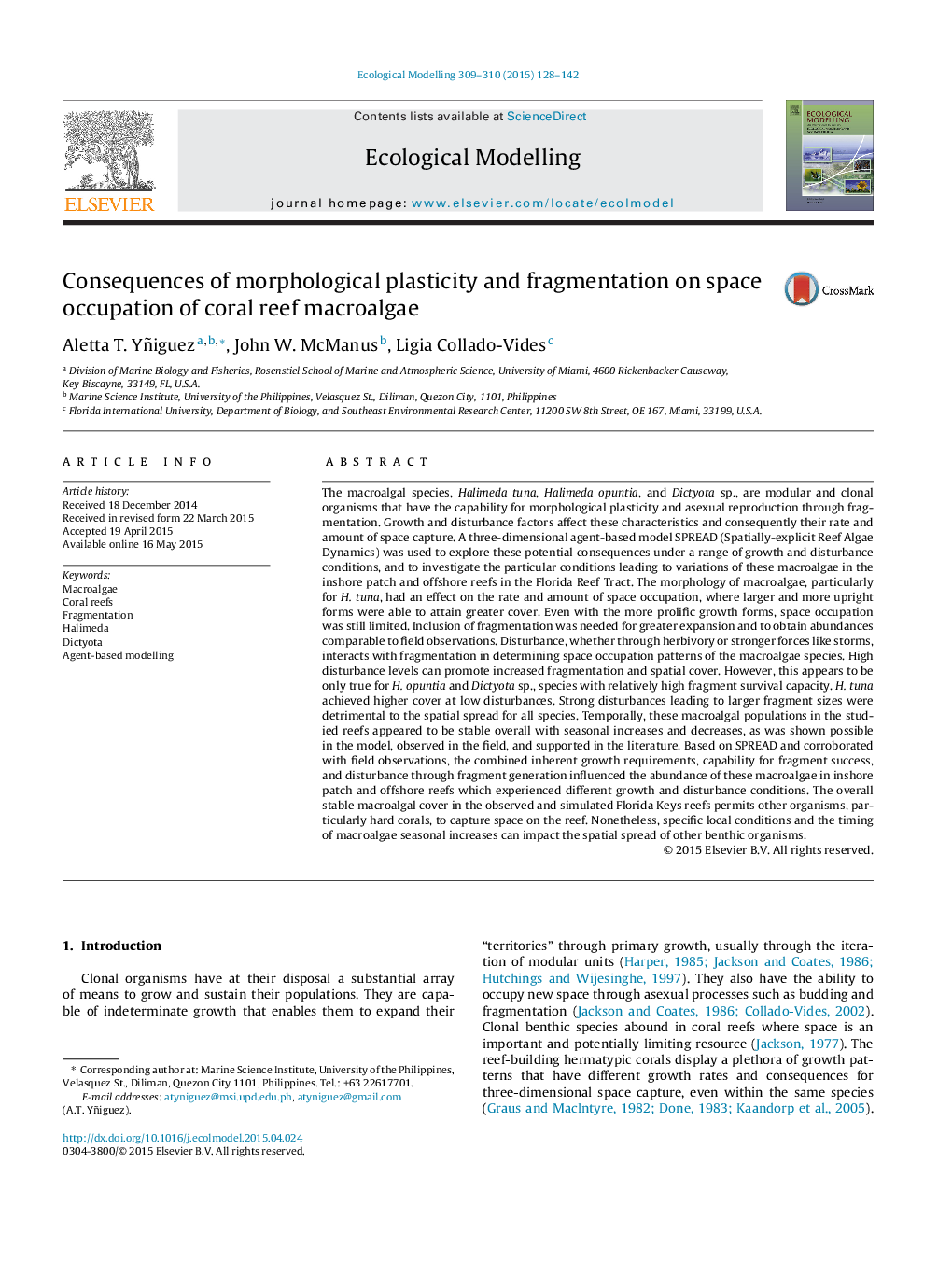| کد مقاله | کد نشریه | سال انتشار | مقاله انگلیسی | نسخه تمام متن |
|---|---|---|---|---|
| 4375682 | 1617437 | 2015 | 15 صفحه PDF | دانلود رایگان |
• We simulate the plastic and modular growth of dominant macroalgae in Florida reefs.
• Variability in their growth in the model was related to different conditions.
• Fragmentation and disturbance are important in their expansion in real reefs.
• High disturbance promotes increased spatial cover except for one species.
• The model helps explain variability of macroalgal cover in offshore and patch reefs.
The macroalgal species, Halimeda tuna, Halimeda opuntia, and Dictyota sp., are modular and clonal organisms that have the capability for morphological plasticity and asexual reproduction through fragmentation. Growth and disturbance factors affect these characteristics and consequently their rate and amount of space capture. A three-dimensional agent-based model SPREAD (Spatially-explicit Reef Algae Dynamics) was used to explore these potential consequences under a range of growth and disturbance conditions, and to investigate the particular conditions leading to variations of these macroalgae in the inshore patch and offshore reefs in the Florida Reef Tract. The morphology of macroalgae, particularly for H. tuna, had an effect on the rate and amount of space occupation, where larger and more upright forms were able to attain greater cover. Even with the more prolific growth forms, space occupation was still limited. Inclusion of fragmentation was needed for greater expansion and to obtain abundances comparable to field observations. Disturbance, whether through herbivory or stronger forces like storms, interacts with fragmentation in determining space occupation patterns of the macroalgae species. High disturbance levels can promote increased fragmentation and spatial cover. However, this appears to be only true for H. opuntia and Dictyota sp., species with relatively high fragment survival capacity. H. tuna achieved higher cover at low disturbances. Strong disturbances leading to larger fragment sizes were detrimental to the spatial spread for all species. Temporally, these macroalgal populations in the studied reefs appeared to be stable overall with seasonal increases and decreases, as was shown possible in the model, observed in the field, and supported in the literature. Based on SPREAD and corroborated with field observations, the combined inherent growth requirements, capability for fragment success, and disturbance through fragment generation influenced the abundance of these macroalgae in inshore patch and offshore reefs which experienced different growth and disturbance conditions. The overall stable macroalgal cover in the observed and simulated Florida Keys reefs permits other organisms, particularly hard corals, to capture space on the reef. Nonetheless, specific local conditions and the timing of macroalgae seasonal increases can impact the spatial spread of other benthic organisms.
Journal: Ecological Modelling - Volumes 309–310, 10–24 August 2015, Pages 128–142
